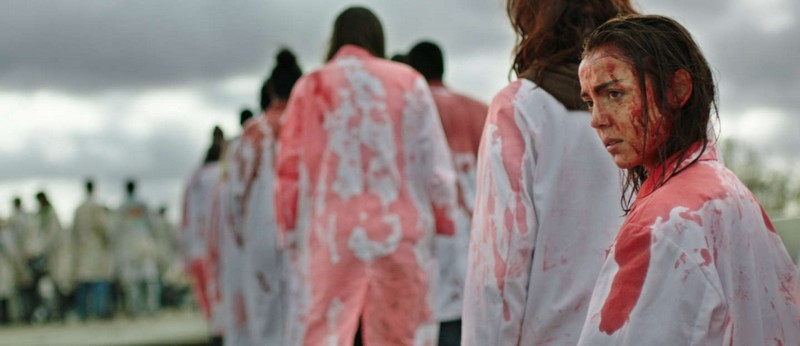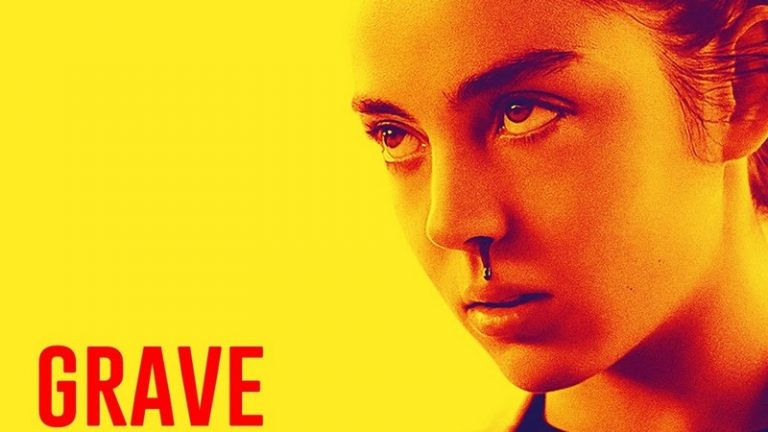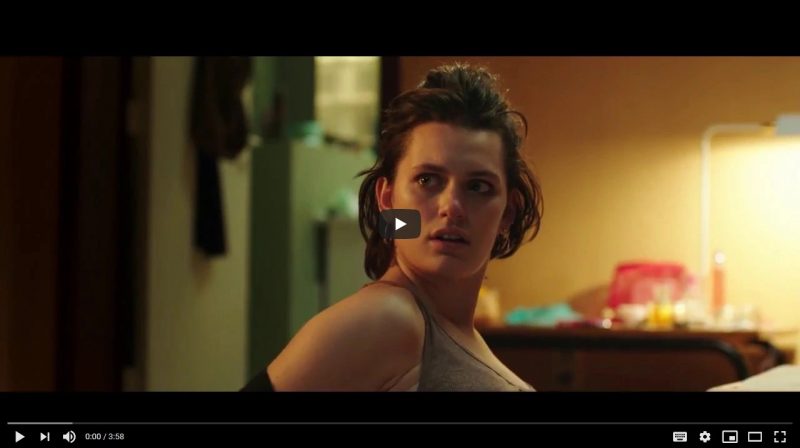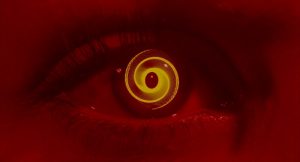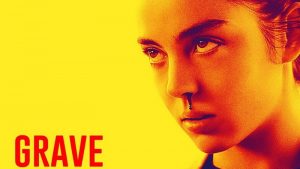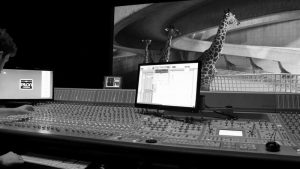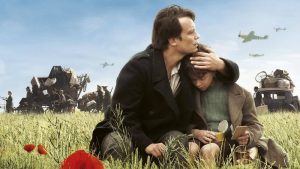Direction : Julia Ducournau / Original Soundtrack : Jim Williams
/ Synopsis
In Justine’s family everyone is a veterinarian and vegetarian. Sixteen-years-old, and an exceptional student, she is about to start studies at a veterinarian school where her older sister is also a student. But, she has barely arrived when the hazing starts. Justine is forced to eat raw meat. It is the first time in her life she has eaten meat of any kind.
The consequences quickly make themselves felt. Justine discovers her true nature.
At the begining : the intention
We no longer have films with themes. I want to have a theme for my main character, a theme for the road and I want to have a theme for the death, the elegy
The Director Julia Ducournau explains the way she initiated the work with her Composer Jim Williams.
We can notice a real desire to leave a strong musical imprint on the film. This is the essential ingredient of any great Soundtrack, I’ll get to this point later.
Raw shakes up the watcher : the film shows us images that are sometimes very difficult to support as they are “raw” : it is a transformation’s story, by a girl who accepts his condition and regains its “primitive” instincts. I personally experienced it in the first degree (like a drama) while others saw it as a “Gore comedy”. Certainly the particularity of this unclassable film.
In this singular proposal, music brings a form of lyricism through its choices of colors and harmonies. I will focus mainly on the main theme we can find in this excerpt below, at a pivotal moment in the film where a change is taking place :
Some details about the Theme's conception
This Leitmotiv is strong, powerful, outrageous, disturbing : It does not appear smoothly in the mix, it offers itself fully, abruptly, it “grabs” us. This theme of the relationship between the two sisters can be felt as a kind of fall, but it more embodies a transformation, a metamorphosis, a Justine’s acceptation of her primary instincts.
This feeling of going down is musically illustrated by the bass line which, during almost the entire Track, gradually comes down lower and lower.
This bass also plays a role which is reminiscent of the structures widely used in Baroque period music (obstinated bass 1). This reference to the baroque era is quite obvious and we will find it again in the instrumentation’s choices.
To notice : the harmonic conception of this music is well thought out because it is both intelligible – its structure is close to many pieces of variety music – and confusing. Indeed, the track’s structure contains three sentences (link to the first, the second, the third).
In variety – as often is the case in Baroque music – we tend to repeat a musical phrase. To do this, the harmony is prepared to be repeated by using certain very specific chord sequences – which are called “Cadences” in music. During the first sentence, we are waiting for its repetition and yet the music modulates2 towards a new tone (around 0’24). We can find the same effect for the second sentence (with its modulation towards 0’38).
Additionnaly I would say the choice of the modulation tone is not a coincidence and completes this feeling of perpetual fall, but I think that could definitely brings risk of losing the non-musicians who would venture on this page and as my wish is to make film music accessible to everyone I think it’s the time to stop the demonstration 😉
Let us simply remember that the musical structure serves the subject.
1 Obstinate Bass : a type of variation form in which a bass line, or harmonic pattern is repeated as the basis of a piece underneath variations. A process widely used in the Baroque period, one of the leading examples of which is the famous “Canon” by Pachelbel.
2 To modulate : to change Music tonality
3 Temp-Track Music : pre-existing music (which already exists and was not designed for this particular film). The editor works very often with this material because he rarely has the Composer’s original music during the editing phase.
The Theme and its instrumental colours
Associating a theme to a character means that the music can evolve with the character, this is where we enter into a dialogue between the music and the character and not just illustrating with it ; where we are in something that can become visceral, even worrying
Once again, the Director gives us all the elements of understanding the soundtrack. Because the theme is inexorably associated with Justine’s character, it can “dress up in new clothes”, or rather, change instrumentation. We therefore find at several times the same Leitmotiv played by different instrumental ensembles (in the excerpt, mainly electric guitars and organ, and in other passages, harpsichord and strings, etc.).
These choices are all thought out and understood with a resonance in the story :
the Organ is the instrument of the churches, it is the instrument of sin. When Justine accepts what is happening to her, the theme is taken up on the harpsichord which is also a baroque instrument which, on the other hand, is totally devoid of any religious connection; the harpsichord is paganism. It is detachment from religion, and therefore the moment when Justine enters into her own instincts and ignores the other’s gaze on her. In a way, this is also where she starts to worry us.
Experiences' feedbacks
Editing images step : a point of view of the musical conception
It is always interesting to have focuses of the creative process. I have to thank Jean-Christophe Bouzy the film’s editor who brings to this analysis a great light :
“The editing was done at the start mainly with Temp-tracks3 to bring a tense, horrific atmosphere. However, these atonal tracks did not fully give us satisfaction and we were looking to work with at least one or more themes (cf. Leitmotivs). We had in mind some great works of Baroque Music, notably The Art of Fugue by JS Bach and The Four Seasons by Vivaldi. “ – These tracks undoubtedly became musical references for the Composer.
“Jim Williams has been contacted after shooting. However, he got into the editing process quite quickly and was able to interact with us.
After several exchanges, the main theme was found (the Football match’s scene) with very Baroque colors, which remained on this sequence.” – This first step allowed the Composer to structure the music throughout the film and in particular to bring this more amplified orchestration to the theme, to give it a “modern” color.
It is necessary to understand here, by this example, that the contemporary Composer is not only in very close relation with the Director, but also with all the professionals involved in post-production and, first of all, the Editor.
If the film is a collective work, so is the film music : a collaboration and sharing work during which the Composer lends an attentive ear, listening to any suggestion to serve the musical idea.
The Musical Supervisor on the begining of the artistic meeting
To go even further to the heart of the conception, Guillaume Baurez, the film’s musical supervisor, told me that “Julia had a fairly precise idea of what she wanted. Just like the singularity of her film, she wanted textures far from the canons of genre film.”
One of her references was a track composed by Jim for the Ben Weathley’s film « Sightseers » : a short and cyclic piece for harp and guitar.”
“Julia & Jim met together at his studio at Brighton, in order to find some principal textures Julia had in mind.
We first tried to find the Justine’s theme : the right balance was difficult to find to express a certain candor without being too childish.
After some tries we find the right mood and tempo. And the track “Child music: coming at age” was born.
It’s like a symbol of the perfect collaboration between Julia & Jim”
This track prefigures the famous main theme.
“Julia is a gem for a composer because she knows exactly what she wants. She quickly manages to explain her desires.“
A great Film music
A direction's choice which goes beyond the film experience
Great Soundtracks can be often recognized by their ability to be enjoyed without the images. But even more, music alone allows to make the story existing in the film viewer’s idea , it brings us back to the memories of the image, to the moments, to the emotions that we have experienced. Melodies have the power to transport us to the past.
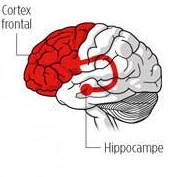 Indeed, thanks to medical imaging, we know that music leaves lasting traces in the brain – through the amygdala and the frontal cortex – whether you are a musician or not.
Indeed, thanks to medical imaging, we know that music leaves lasting traces in the brain – through the amygdala and the frontal cortex – whether you are a musician or not.
Even more, music activates the reward structures involved in the processing of emotions, such as the amygdala and the orbitofrontal cortex, allowing us (sometimes) to reach the famous “musical thrill”.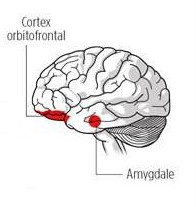
We can conclude there is no better impact for the viewer’s memory than a strong musical theme, which we can be loop listened and which naturally plunges us back into the film: it is the main Merchandising tool for any audiovisual project! Let’s just remembering the musical themes which marked our experiences of Cinema to understand that. Just for example, listening to the “Star Wars Main theme” automatically sends us back to the Saga, well much than a Poster, Mug or T-shirt bearing his effigy.
Music stays in the Viewer’s mind : it organically refers him to the film.
Each time you listen to the theme, you plunge back into Story : there is a sensitive relationship of a great power, of which we are not yet sufficiently aware.
Many Directors have integrated very well this dimension which allows the film to keep an indelible mark in the imagination of the film’s viewer, well beyond the experience on theaters.
/ Informations
Direction : Julia Ducournau
Music : Jim Williams
Music nominated to the Cesar best original music & British Independent Film Award.
